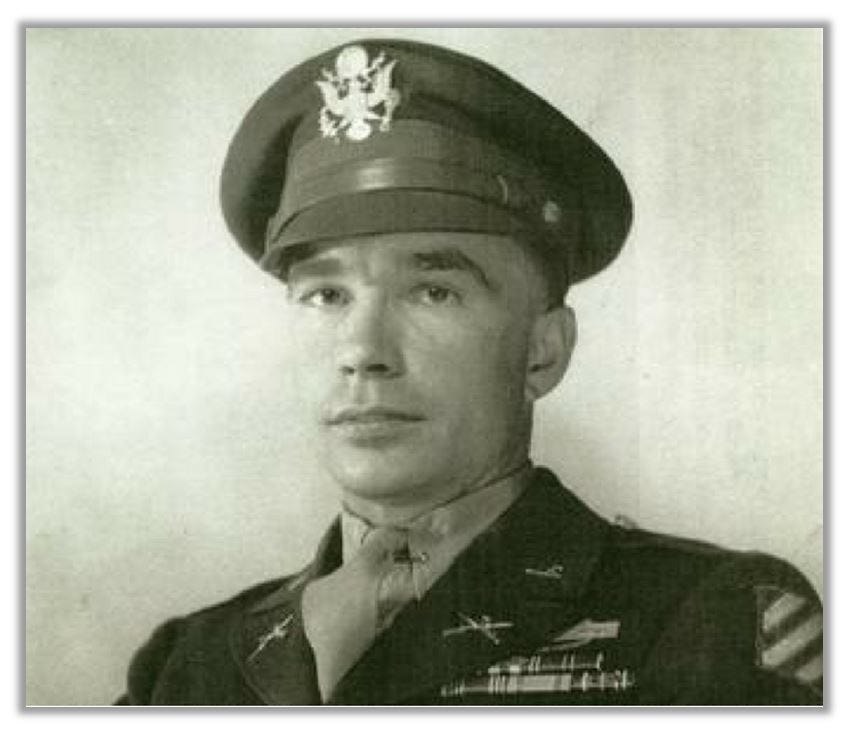Medal of Honor Monday: Garlin M. Conner
One of the most decorated soldiers in World War II, following closely on the heels of Audie Murphy.
On this day in 1919, a hero is born. Garlin M. Conner would go on to receive the Medal of Honor, albeit not until almost two decades after his death—and more than 70 years after his act of bravery.
The Medal cements First Lt. Conner’s place in history as one of the most decorated soldiers in World War II, following closely on the heels of Audie Murphy.
How odd that Audie Murphy is so famous, but Conner is relatively unknown? Conner spent 28 months on the front lines of the war. He was wounded seven times during 10 different campaigns and four amphibious assault landings. He received one battlefield commission.
He was only 5’6” and 120 pounds: a small man to have accomplished so much. When Conner’s future wife first met him, she couldn’t believe it. “My God, that little wharf rat, he couldn’t have done all they said he done,” she later remembered telling her mother.
Conner’s Medal action came in January 1945.
He was serving as an intelligence staff officer with the 3rd Battalion, 7th Infantry, 3rd Infantry Division, near Houssen, France, when that battalion was attacked.
Technically, Conner wasn’t even supposed to be there. He’d been in a field hospital because of a wound to his hip. The doctors wanted to send him back to the States, but Conner refused. He left the hospital and returned to his unit, arriving just as it was attacked.
Wound or no wound, he “immediately volunteered to run straight into the heart of the enemy assault,” his citation describes. Someone had to get into position to direct artillery at the enemy. Conner would be that man. He ran 400 yards, his citation continues, “through enemy artillery fire that destroyed trees in his path and rained shrapnel all around him, while unrolling telephone wire needed to communicate with the Battalion command post.”
He didn’t stop—even when he reached the battalion’s front line. He ran 30 yards further before taking cover in a shallow ditch. He had only his telephone and a submachine gun.
For the next three hours, Conner directed fire on the Germans: There were 600 of them, plus 6 Mark VI tanks and tank destroyers. At one point, the Germans swarmed towards him, intensifying their attack and coming within five yards of his location in the ditch.
Conner promptly ordered artillery fire on his own position. He’d “resolved to die if necessary to destroy the enemy advance,” his citation concludes.
Amazingly, Conner survived what followed, even as friendly artillery exploded all around him. The enemy advance had been stopped. Fifty Germans lay dead. One hundred more were wounded.
Conner never really spoke of his feats once he returned home. Instead, he got married and resumed life as a farmer. When asked about his experiences, he simply said that he’d left those memories on the other side of the Atlantic.
Conner was initially awarded the Distinguished Service Cross for his actions. However, a long fight after his passing in 1998 would get the Cross upgraded to a Medal of Honor. His widow received the Medal on his behalf in 2018.
“After all these years it really is and truly is an honor,” Mrs. Conner said at the time. “I had really and truly given up on it. . . . But he has a record that speaks for itself. I don’t have to tell it.”
Sources can always be found on my website, here.





Lt. Conner was much taller than he he appeared....
It struck me that Lieutenant Conner said he left the memories of his wartime heroics across the Atlantic. I wonder if that is the difference between their way of dealing with what we now call PTSD and our modern way of handling it. Many of the Greatest Generation just compartmentalized those experiences as "another life" and moved forward.